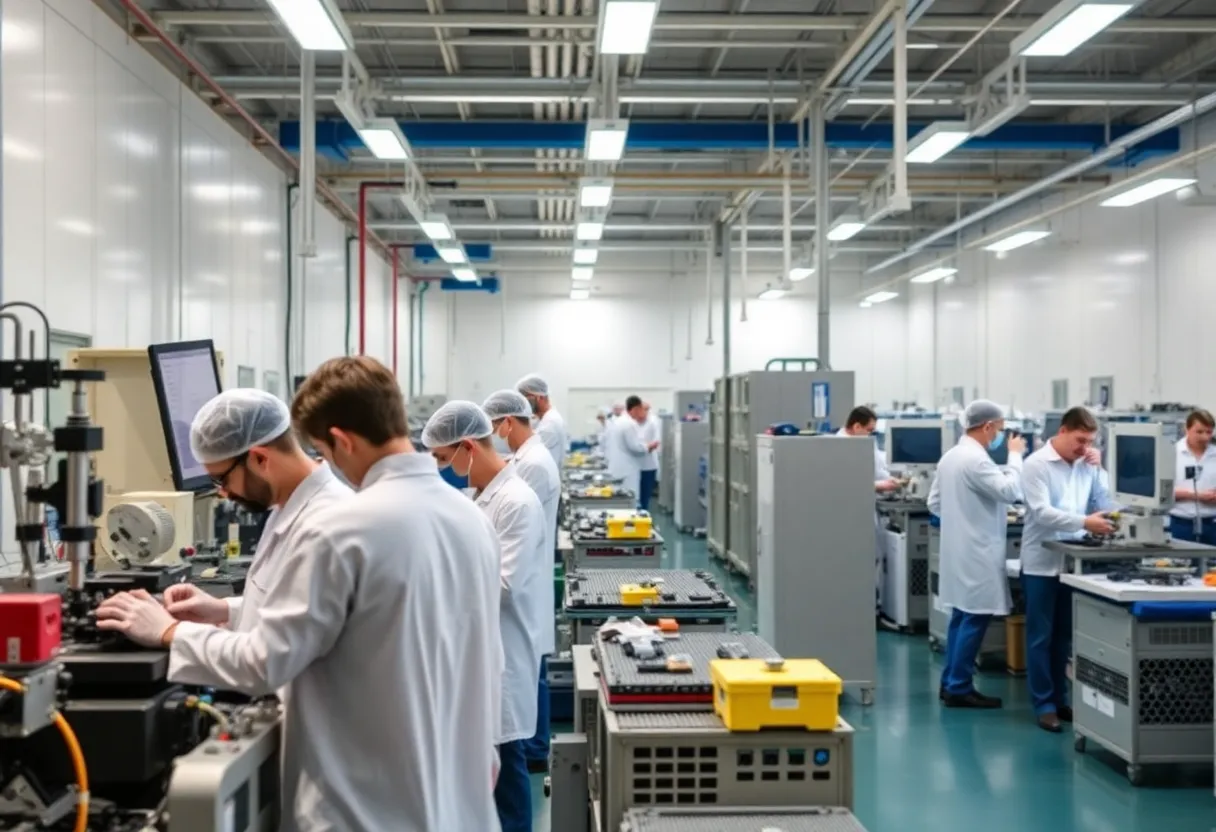News Summary
Taiwan Semiconductor Manufacturing Company (TSMC) has announced impressive profitability for Q2 2025, with net profits of NT$398.27 billion, largely due to robust demand from its Arizona fabrication facilities. The Arizona site produced 30,000 4nm wafers monthly, significantly contributing to TSMC’s earnings despite struggling operations in Japan. Additionally, TSMC has secured government subsidies and plans to expand its workforce to support growth in semiconductor manufacturing amidst increasing global demand for AI applications.
ARIZONA – Taiwan Semiconductor Manufacturing Company (TSMC) has reported a substantial increase in profitability for the second quarter of 2025, with a net profit of NT$398.27 billion, driven primarily by strong demand in its US fabrication facilities. This marks the company’s second consecutive quarter of profitable operations in Arizona, where its subsidiary earned NT$4.232 billion in net income. TSMC’s significant investments and successful operations in the U.S. starkly contrast with the company’s ongoing struggles in Japan.
The Arizona facility has not just been a financial success; it has also made great strides in production capacity. The first fab in Arizona is able to produce approximately 30,000 4nm wafers each month, all of which are fully booked by major clients such as Apple and AMD. The facility’s performance has contributed NT$6.447 billion in investment income recognized by TSMC for the first time, underscoring the effectiveness of its operational strategies and alignment with market demands.
Amid this success, TSMC’s Japanese operations are facing significant challenges. The company’s Japanese subsidiary, Japan Advanced Semiconductor Manufacturing (JASM), recorded a net loss of NT$4.52 billion in the first half of 2025. JASM has struggled with low utilization rates, operating at approximately 50% capacity, primarily due to intense competition in mature technology nodes and insufficient adoption of innovative technologies, particularly in the automotive industry.
In addition to these operational challenges, TSMC’s second fab in Kumamoto, Japan, is encountering delays and is now not expected to commence operations until the first half of 2029. The disparity in outcomes between the U.S. and Japanese markets highlights contrasting dynamics at play in the semiconductor industry.
In the context of its broader financial health, TSMC has secured NT$67.13 billion in government subsidies from the U.S., Germany, Japan, and China during the first half of 2025. These funds have primarily been allocated to offset costs related to property, plant, and equipment. TSMC is also considering applying for an additional 25% investment grant for eligible projects to further support its growth.
The output value of Taiwan’s semiconductor industry is expected to grow by 22.2% this year, bolstered by the increasing global demand for artificial intelligence applications. This demand underlines the strategic importance of TSMC as it expands its capacity and operations in response to shifting market needs.
TSMC’s total investment in U.S. operations has reached an impressive US$165 billion, showcasing the company’s commitment to leveraging the advantages of the American market. The construction of TSMC’s second fab in Arizona has recently concluded, and the process for moving in necessary tooling is anticipated to begin in the third quarter of 2026.
Looking ahead, as TSMC plans to open its third fab by the end of the decade, it is expected to require around 6,000 employees. The company is actively recruiting for technician positions, offering opportunities even to those with only a high school diploma and no prior experience. This effort is supported by a newly launched apprenticeship program aimed at creating a sustainable workforce pipeline for critical technician roles.
The operational trends at TSMC reflect broader themes in the semiconductor industry, including the varying rates of technological adoption and the importance of government support in facilitating growth within the sector. As the market continues to evolve, TSMC’s performance will serve as a key bellwether for the health and future direction of semiconductor manufacturing globally.
Deeper Dive: News & Info About This Topic
- Taipei Times: TSMC Financial Report
- TrendForce: TSMC Arizona Investment
- AZ Central: TSMC Arizona Production
- Benzinga: TSMC Hiring News
- Axios: TSMC Arizona Workforce Growth
- Wikipedia: Semiconductor
- Google Search: Taiwan Semiconductor Manufacturing Company
- Google Scholar: Taiwan Semiconductor
- Encyclopedia Britannica: Semiconductor
- Google News: Taiwan Semiconductor Manufacturing Company

Author: STAFF HERE PHOENIX WRITER
The PHOENIX STAFF WRITER represents the experienced team at HEREPhoenix.com, your go-to source for actionable local news and information in Phoenix, Maricopa County, and beyond. Specializing in "news you can use," we cover essential topics like product reviews for personal and business needs, local business directories, politics, real estate trends, neighborhood insights, and state news affecting the area—with deep expertise drawn from years of dedicated reporting and strong community input, including local press releases and business updates. We deliver top reporting on high-value events such as the Waste Management Phoenix Open, Cactus League Spring Training, and Arizona State Fair. Our coverage extends to key organizations like the Greater Phoenix Chamber of Commerce and Visit Phoenix, plus leading businesses in technology and healthcare that power the local economy such as Intel and Banner Health. As part of the broader HERE network, including HERETucson.com, we provide comprehensive, credible insights into Arizona's dynamic landscape.





